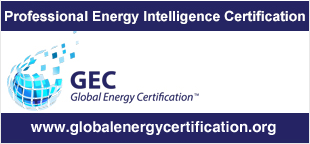Price: £950.00
Prod. Code: NRGES1
NRG Expert provides a comprehensive overview and analysis of the Energy Storage sector. Its looks at the grid, the rationale for storage, current storage, technologies and much more.
Key reasons to purchase this research
- Make informed business decisions through a clear global understanding of this market
- Design business strategies by understanding the trends, developments and predictions
- Understand the trends, developments and opportunities
- Prepare market size evaluations and forecasts
- Manipulate the in-depth data to meet your requirements
What’s in this report?
- The Grid – power demand, base load, peak load, intermediate load
- Renewables
- The rationale for storage
- The current state of storage
- The storage technologies
- The key countries
- The Major major players
Background to this research
Renewable Capacity into the Grid
Energy storage has started to garner interest as a means to integrate more intermittent renewable capacity into the grid. Storage has more uses such as meeting peak demand and delaying investment in generation capacity as a whole, which makes it attractive for utilities.
Although while most interest in storage has focused on grid-scale applications, there is also a large market for smaller, scale distributed storage. This includes storage at the consumer-side which could meet demand when the upstream part of the grid is offline. To illustrate the point, in 2010 grid-scale storage projects only accounted for just under a third of all storage deals.
Energy Storage Technologies
The most commercial energy storage technologies are pumped hydro and compressed air energy storage (CAES), even though only two CAES facilities are in operation. Other stor-age technologies include flywheels and batteries which are also more viable for smaller scale storage projects and are less restrictive in terms of the suitable locations for projects. This includes batteries in electric vehicles, which can potentially be used to store excess off peak electricity and discharge the electricity at peak times. As the costs of some of these alternative storage options have fallen, they are starting to attract more interest. However, high costs and a lack of subsidies are limiting the development of the sector.
Electric vehicles and charging devices are receiving more subsidies, especially in China where automotive manufacturers are producing cheaper models than their European and US counterparts. The market for electric vehicles is expected to be the largest in China based on government targets and growth of the battery industry. Strong forecast growth in demand for batteries for the telecommunications and other sectors provides a solid core business for Chinese battery manufacturers involved in the manufacturer of batteries for electric vehicles.
It is expected that e-bikes and micro-hybrids will dominate the market in the short-term and electric vehicles and plug-in hybrids in the longer-term. Firstly, as larger numbers of scooters and small vehicles are on the road in China and India – another potential market for electric vehicles. Secondly, micro-hybrids (vehicles with an internal combustion engine and battery capacity for regenerative braking and start-stop functions) are the lowest hanging fruit for achieving fuel efficiency and CO2 emission standards for vehicles.
The Development of the Storage Sector
Batteries for electric vehicles and plug-in hybrids are too expensive and the infrastructure is not in place for large-scale charging of vehicles. The development of smart grids would make these vehicles more attractive.
The development of the storage sector is largely reliant on rising oil prices, in the case of electric vehicles, and gas prices, in the case of grid storage and distributed capacity. Both of which are likely in the mid-term.
Price: £950.00
Prod. Code: NRGES1

















